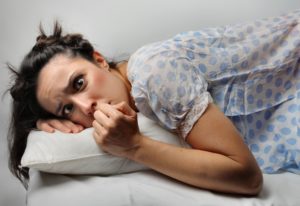
nightmare
Go ahead and try to find someone who will think that college is not stressful, and you will fail. College is stressful for everyone, at least at some point. How can one not get anxious trying to juggle school, part-time job, friends, and family while ultimately trying to figure out the path for the rest of the life? Some of the students are either stress-resistant or learned how to cope with the overwhelming amount of responsibilities. But eventually, constant stress for a prolonged period leads to frequent, intense and uncontrollable anxiety disorder.
This post will explain what the anxiety disorder is, the danger of it and how to treat it.
Facts and statistics about anxiety disorders in young people

Embracing couple
As a college student myself I know that students tend to hide their anxiety. I personally, feel embarrassed to admit to friends that every aspect of my life is spinning out of control. Although I never talk about this issue in college, I assume that way more people than I realize pretend that they are doing just fine while trying to hide deep stress and anxiety.
What is anxiety disorder?
Anxiety is a normal reaction to stress and can be beneficial in some situations by alerting the danger and helping us pay attention. Anxiety disorders, however, differ from normal feelings of nervousness and involve excessive worry or anxiety. It is the most common mental disorder, and it comes in many different forms.
According to the Maryland Recovery Center, the different types of anxiety disorders are
- Generalized anxiety disorder (GAD): A continuous, unreasonable sense of fear or dread in almost any situation. Usually, a person is diagnosed with GAD after six months of constant anxiety and worry about lots of different things.
- Panic disorder: Feelings of sudden, overwhelming terror that strike at any given time, lasting around 10 minutes. Someone having a panic attack may experience shortness of breath, chest pain, dizziness. The side effects are often so strong that people suffering panic attacks may think they are having a heart attack. A person is diagnosed with a panic disorder with these panic continuously occur for more than a month.
- Post-traumatic stress disorder (PTSD): Usually occurs after a person experienced a traumatic event (military combat, major accident, disaster). PTSD is characterized by nightmares, irritability, insomnia and frequent flashbacks to the event in question. PTSD is diagnosed when a person has suffered these symptoms for at least a month.
- Social anxiety disorder (SAD): An unreasonable fear of interacting with other people and being criticized, embarrassed or humiliated in everyday situations such as making small talk, speaking publicly or eating in public.
- Various phobias: Do you fear heights? Flying? Being trapped in enclosed spaces? Clowns? Germs? Certain animals? If the fear is overly debilitating and irrational, then you may be diagnosed with a specific phobia.
The effects of anxiety disorder
The life of someone suffering from the anxiety disorder is plagued by a constant state of worry, fear, and dread. It dominates the thinking and interferes with even the simplest daily functions. Chronic anxiety disorder frequently causes drug abuse, anorexia nervosa, bulimia or other eating disorder.
Treatment for addicts with anxiety disorders

hands
Anxiety disorders are treatable, and the vast majority of people show the signs of recovery after few weeks or months of treatment. Others may need more than a year to recover. Treatment of anxiety disorder is complicated, especially if a person has more than one anxiety disorder or if he or she suffers depression or substance abuse along the way. This is why treatment should be led by professional medical care, which is offered at the Maryland Recovery Center.
Treatment at the Maryland Recovery is individualized: patients have their own recovery plan adjusted for their treatment program. All staff is fully trained and prepared to stop the effects of anxiety from controlling a person’s life.
Sources
https://www.nimh.nih.gov/health/statistics/prevalence/any-anxiety-disorder-among-adults.shtml